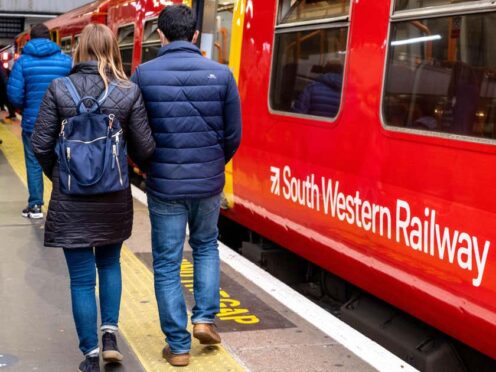Network Rail has denied recording passengers’ emotions as part of trial of AI cameras.
Documents obtained by civil liberties group Big Brother Watch show the Government-owned company launched a pilot scheme at major stations in 2022 which was able to assess whether someone was happy, sad or angry.
In the documents, obtained in response to a freedom of information (FOI) request, Network Rail wrote that this could be used to “measure satisfaction” and “maximise advertising and retail revenue”.
But a spokesperson for Network Rail told the PA news agency no analysis of emotions took place.
The system did send images for analysis by Amazon Rekognition software to record demographic details, such as a passenger’s gender and age range, but that part of the programme has ended.
Cameras were positioned to photograph passengers passing through ticket barriers at stations such as London Euston, Glasgow, Leeds and Reading.
This was part of a wider trial to use AI to tackle issues such as trespassing, overcrowding, bicycle theft and slippery floors.
Jake Hurfurt, head of research and investigations at Big Brother Watch, said: “Network Rail had no right to deploy discredited emotion recognition technology against unwitting commuters at some of Britain’s biggest stations, and I have submitted a complaint to the Information Commissioner about this trial.
“It is alarming that as a public body it decided to roll out a large-scale trial of Amazon-made AI surveillance in several stations with no public awareness, especially when Network Rail mixed safety tech in with pseudoscientific tools and suggested the data could be given to advertisers.
“Technology can have a role to play in making the railways safer, but there needs to be a robust public debate about the necessity and proportionality of tools used.
“AI-powered surveillance could put all our privacy at risk, especially if misused, and Network Rail’s disregard of those concerns shows a contempt for our rights.”
A Network Rail spokesperson said: “We take the security of the rail network extremely seriously and use a range of advanced technologies across our stations to protect passengers, our colleagues and the railway infrastructure from crime and other threats.
“When we deploy technology, we work with the police and security services to ensure that we’re taking proportionate action, and we always comply with the relevant legislation regarding the use of surveillance technologies.”
